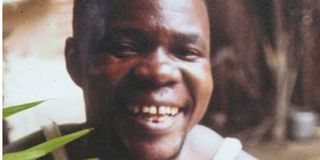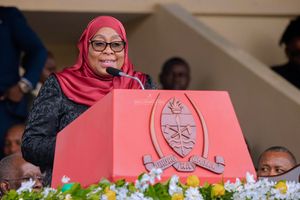Edward Said Tingatinga: A forgotten genius

What you need to know:
Tingatinga’s stroke of genius lay in the fact that he started painting in an environment where popular painting was non-existing and fine arts painting was minimal.
If you ask any Tanzanian member of the intelligentsia who is Michael Angelo, Vincent van Gogh, or Pablo Picasso, chances are that they will tell you they know something about one of those artists. This is not surprising at all. After all, at least three of Picasso’s paintings have fetched over $100 million each.
The fact that Picasso was at one point influenced by African art would escape most people, particularly Africans. It is true that many of the famous European artists did not make a lot of money while they were alive. But this is not about the Picassos of the world and how much money they made.
It is about long forgotten and forsaken African artists. One particular artist from Tanzania named Edward Said Tingatinga, provides us with an opportunity to reconsider the value we place on African art and artists in general.
Edward Said Tingatinga was an artist, a pioneer, a genius, who created a new style of painting. He created a painting style that has come to bear his name: Tinga Tinga. Tinga Tinga style is said to have been influenced by the Ndonde mural art traditions where by the Ndonde people painted their homes.
Tingatinga was thirty six years old when he first picked up a brush to paint and he would do his last painting at the tender age of forty. This gifted artist left his mark on the art world within a period of just three years. Tingatinga’s paintings are sought out around the world by art collectors and sell for tens of thousands of dollars.
While many know of Tingatinga art, few know of the man behind this beautiful art. The life of Edward Said Tingatinga was cut short on May 17, 1972 at the age of 40. He was shot down by a Tanzanian police who mistook him for a fleeing robber. Tingatinga was born in 1932 in Tunduru, southern Tanzania.
He had two years of formal education. The twenty five year old Tingatinga decided to look for new opportunities elsewhere. He travelled to Tanga to work in Sisal plantations. This was difficult work. Tanzania, then Tanganyika, was a British colony and Europeans owned the plantations. Tingatinga decided to leave Tanga for Dar es Salaam sometime towards the end of 1950s. He first secured a job as a “house boy”, a servant, for a colonial official. This was a common job for many young men and women leaving rural areas to seek new opportunities in the cities.
Tingatinga later sold vegetables and fruits before finally securing a job at the Muhimbili hospital. Tingatinga started painting for the first time in 1968. He worked at Muhimbili and painted in his spare time. His paintings started getting noticed by foreigners in Dar es Salaam.
He started selling more and more paintings outside Morogoro stores in Oyster Bay area. Morogoro stores was a popular shopping place for foreigners. Eventually Tingatinga made enough money from his paintings that he could resign from his job at Muhimbili and paint full time. There is no question his unique style of painting was and remain both beautiful and creative.
Africa has produced many artistic geniuses. Unfortunately, recognition of African artists has often come from outside Africa and not within Africa itself, if there has been any recognition at all. African artists do not get the recognition they deserve from painters to musicians. We have no one else to blame but ourselves for this.
Tingatinga, like his contemporary artist George Lilanga, have not received the recognition they deserve from Tanzanians or Africans. Tingatinga died relatively poor despite the fact that he was starting to make more money towards the end of his life. At least one of Tingatinga’s paintings, Spotted Hyena, sold for $2,196 in 2010. Other paintings have fetched higher prices. George Lilanga’s paintings on the other hand, are listed for between $10,000 and $15,000.
Lilanga is said to have influenced the American graffiti artist Keith Haring. Tanzanians and Africans in general place little value in their artwork and artists. Those who were lucky enough to have met Tingatinga in the late 1960s and early 70s, were without a doubt, in the presence of artistic excellence, a Tanzanian genius.
While Tingatinga may not be well known or respected by many Africans today, there is little doubt that in time, he will get the respect and honor he deserves. He is one of the greatest artists of the 20th century! This recognition will, however, only happen when Africans, Tanzanians, start recognising and placing more value in their artwork.
Professor Azaria Mbughuni, Chair, History Department, Lane College, US
[email protected] @AzariaTZ




